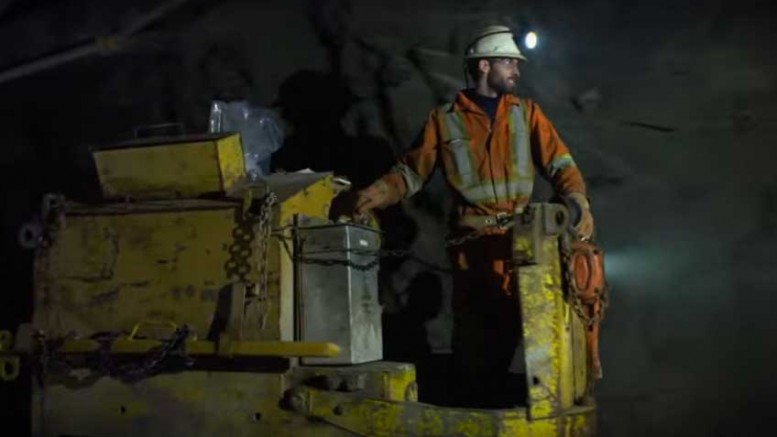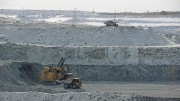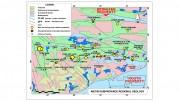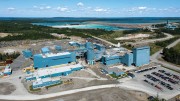VANCOUVER — Metanor Resources (TSXV: MTO) hopes that a restart of its Barry open-pit gold mine in Val-d’Or, Que., will bring some extra pep to the junior’s step, considering that cash flow and profits from its flagship Bachelor underground gold mine, 150 km north, are being hampered by a five-year-old gold stream.
Ronald S. Perry, vice-president and treasurer of Metanor, tells The Northern Miner during a phone interview that any added mine life at Bachelor “is a win” for Sandstorm Gold (TSX: SSL; NYSE-MKT: SAND) — a royalty and streaming company that gave Metanor US$20 million in 2011, in exchange for a 20% purchase of Bachelor’s life-of-mine gold production for US$500 per ounce.
“Sandstorm has been a great financial partner and supporter of our business. At the time, the deal made sense, but then inflation hit and we got caught up in cost escalations,” he says. “For the past four years we’ve been in a position of weakness, mainly operating our company for our financial partners. But with Barry we can finally move into a position of strength, and generate cash flow and profits for our shareholders in 2017 and onwards.”
In the second quarter, underground mining at Bachelor produced 8,500 oz. gold from 61,000 tonnes of 4.6 grams per tonne gold, and generated $15.5 million in revenue from gold sales.
Production was down from the 10,277 oz. gold seen in last year’s comparable quarter, as mining advanced into a narrow set of veins named “A” and “B.” The company reports that dilution is up to 40%, compared to the 10% predicted in a prefeasibility study.
The outcome of lower grades at Bachelor has resulted in a gross loss of $4.7 million for the fiscal year ending June 30, compared to $1.3 million for the corresponding period last year.
“We’ve been mining these narrow veins, which look great on paper, but when you’re down there blasting, dilution becomes a problem,” Perry says. “The main veins are where we want to be, and where the money is made, and we’re just finding extensions of that now at Hewfran. So we expect production to go back up and everything to go in the right direction, slowly and surely.”
Since the operation started in 2010, Bachelor has produced 151,374 oz. gold out of the 200,177 oz. gold calculated in the deposit’s proven and probable reserves. The declining resource base is driving Metanor to seek more feed sources.

A drill site in October 2016 at the Moss area on Metanor Resources’ Barry gold project in Val-d’Or, Quebec. Credit: Metanor Resources.
For the past year, the company has focused some of its flow-through money on its Moroy gold prospect — a brownfield discovery located 1 km south of the mine. Over 30,000 metres have been drilled, with 90% in the South zone area, where results vary between 1.1 and 6.1 grams gold over 0.5 to 9.4 metres.
The company has since paused drilling at Moroy, pending new structural interpretations, and turned to Barry instead, where mineralization is more of a bulk-tonnage target.
Barry saw production of 607,000 tonnes at 2.45 grams gold for 44,000 oz. gold between 2008 and 2010, before the company suspended the operation due to declining gold prices.
A resource update at Barry in September pegged the deposit’s open pit material at 2.5 million measured and indicated tonnes of 1.52 grams gold, and 1.2 million inferred tonnes of 2.69 grams gold, assuming 0.66 gram gold.
The resource was delivered alongside the project’s maiden preliminary economic assessment, which envisages production of 193,457 oz. gold over a nine-year mine life with an $8.5-million capital start-up. The open-pit operation has an after-tax net present value — at a 6% discount rate — of $25.9 million, and would have a 94% after-tax internal rate of return, assuming $1,560 per oz. gold.
The ore would be trucked and processed at Bachelor’s 1,200-tonne-per-day mill, which Perry says won’t feed into Sandstorm’s share of the gold.
“Barry is the big cash horse for our company, because there’s no stream on it,” he says. “Since we’ve shut the operation down we’ve learned a lot. Gold prices have gone back up, we can truck the ore cheaper and we have more experience on cutting costs. Plus Barry’s ore is much softer than Bachelor’s, so we can increase our throughput.”
While Metanor plans to produce at Barry in the second half of next year, the company has begun to assess the Moss target, 6 km northeast of Barry, where recent drill intercepts of 2.2 metres of 9.29 grams gold and 2.6 metres of 70.9 grams gold were found close to a regional structure.
The structure can be traced from Barry, through to Moss and onwards to Osisko Mining’s (TSX: OSK; US-OTC: OSKFF) Windfall deposit, where resources add up to 2.8 million indicated tonnes of 8.42 grams gold and 3.5 million inferred tonnes of 7.62 grams gold.
On a larger scale, the deposits fall along a southwest-trending splay off a regional, east- to west-trending structure in the Urban-Barry greenstone belt.
Pascal Hamelin, vice-president of operations, told The Northern Miner during a phone interview that the geology at Windfall is similar to what the company’s geologists see at Moss.
“Osisko has been hitting gold right against the fault … and their high grades occur with disseminated pyrite in felsic rocks,” Hamelin says. “On the Moss property we’re seeing the same thing. That’s why we drilled it, and we hit high grades right away.”
Hamelin noted that previous explorers who drilled Moss found “traces of gold,” but drilled too far south or north, and missed the main vein.
For Perry, Moss presents an opportunity for Metanor, and makes the prospect of mining Barry all the more attractive.
“We’re in a jigsaw puzzle with Osisko. We’re surrounded on three sides by their properties and we think our piece of the puzzle is quite interesting, so we’re excited,” he says. “Our company is about to make a big move, because what we have is a great value play that’s about to get uncovered.”
Metanor has traded in a 52-week range of 3¢ to 12¢ per share, and closed at 8¢ at press time. There are 438.8 million shares outstanding for a $35-million market cap.





Be the first to comment on "Metanor eyes 2017 restart at Barry"